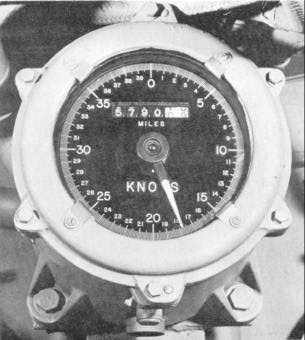Figure 2-30.—Shipboard underwater-speed log indicator.
NOTE: There are two manual methods used to
convert relative wind speed and direction to true wind
speed and direction. The most frequently used method
is the CP-264/U true-wind-computer method (see later
section on the CP-264/U). The maneuvering board
method is also frequently used (see DMA Pub. 217,
Maneuvering Board Manual). The SMOOS system
will automatically convert relative wind to true wind.
Since wind recorder charts are not routinely used
aboard ship, the relative winds are observed directly
from the wind indicator, and winds are averaged over a
2-minute period. During the appropriate observation
time period, ensure that the ship’s course and speed are
steady. Never observe the wind while the ship is turning
or changing speed. Make note of the following:
The average relative-wind speed and direction
during the period
The peaks and lulls in the wind speed, with the
appropriate direction, during the period. (Check for
gust and squall criteria.)
The degree of variability in the wind direction.
(Check for variability criteria.)
True wind computations should be made for both
the average wind speed and direction and the maximum
gust speed and direction.
Verify computed true wind speed and direction
with a check of the sea direction and sea state. Criteria
for estimating wind speed from sea state are contained
in Appendix V. The true wind direction is normally the
same direction the seas are approaching from,
particularly the smaller wavelets. If similar differences
between estimated winds and computed true winds
occur for several observations, a problem with the wind
instruments is indicated. The following points should
be reviewed when verifying true winds:
The true wind direction is always on the same
side of the ship as the apparent wind direction, but is
further away from the bow (in degrees) than the
apparent wind
When the apparent wind direction is abaft the
beam, the true wind speed is greater than the apparent
wind speed
When the apparent wind direction is forward of
the beam, the true wind speed is less than the apparent
wind speed
Whenever the shipboard anemometer is inoperative
or the results are suspect, the winds should be observed
by using the AN/PMQ-3 hand-held anemometer
AN/PMQ-3 HAND-HELD ANEMOMETER
The AN/PMQ-3 anemometer is found aboard ship
and at many shore stations as backup wind-measuring
equipment. All models of the AN/PMQ-3 are nearly
identical in design and operation. Detailed guidance for
operation and maintenance is found in NA 50-
30PMQ3C-1, Manual of Operation and Service
Instructions for the Wind Measuring Set AN/PMQ-
3(C). A standard AN/PMQ-3 (fig. 2-31) comes with a
special storage case (not shown) in which the
anemometer should be stored when not in use. The case
also contains a spare wind vane and spare transmitter.
Operation
To properly use the AN/PMQ-3, you need a
location with unobstructed windflow and a reference
line. When ashore, a field or ramp area with a known
true north reference is ideal. Aboard ship, an
unobstructed area (windward side) of the flight deck or
the signal bridge is acceptable. Keep as far away as
possible from deck edges, since the eddy effects of wind
2-22


